15 Low-Maintenance Perennials for Year-Round Interest
For gardeners seeking a hassle-free way to enhance their landscape, low-maintenance perennials are a must-have. These plants not only look beautiful but are also easy to care for. They bloom and grow year after year, making them a perfect choice for anyone who wants long-lasting results. With minimal upkeep, your garden will stay vibrant without constant attention. Let’s explore which perennials can bring year-round interest to your space with ease.
This post may contain affiliate links, which helps keep this content free. Please read our disclosure for more info.
Daylilies (Hemerocallis)
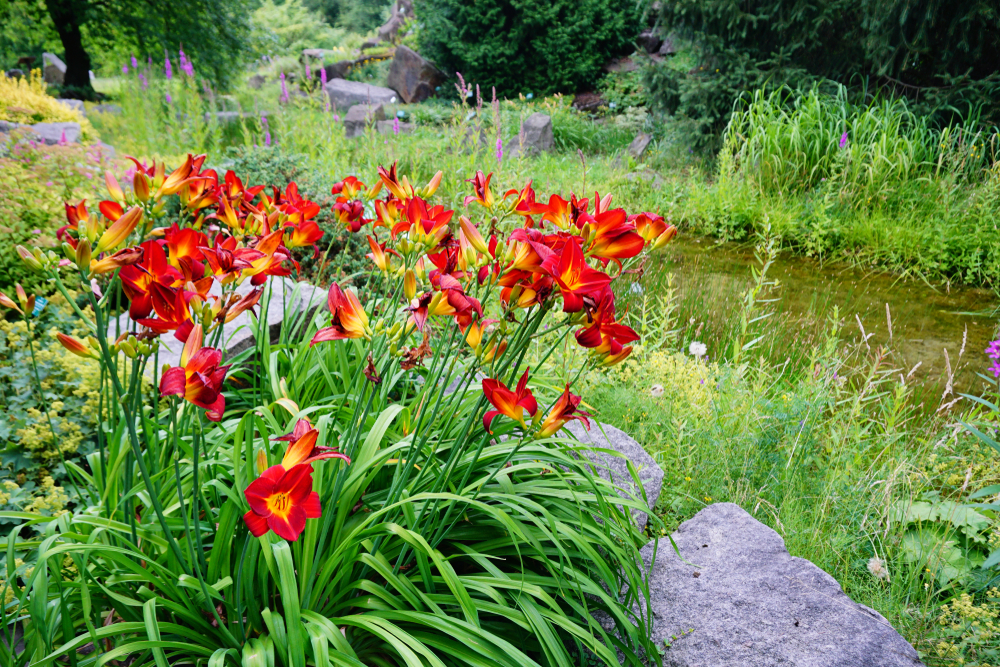
Daylilies are known for their hardiness and ability to thrive with little care. These perennials come in a variety of colors, from yellow to red, and can bloom throughout the summer. They are drought-tolerant and can handle a wide range of soil types, making them ideal for almost any garden. Once established, daylilies require little maintenance beyond occasional trimming and deadheading.
With their long-lasting blooms and low upkeep, daylilies are perfect for busy gardeners. They tolerate both full sun and partial shade, making them a versatile choice. The flowers open in the morning and last only one day, but each stem produces many buds, ensuring continuous color. They multiply over time, offering even more beauty year after year.
Hostas (Hosta spp.)
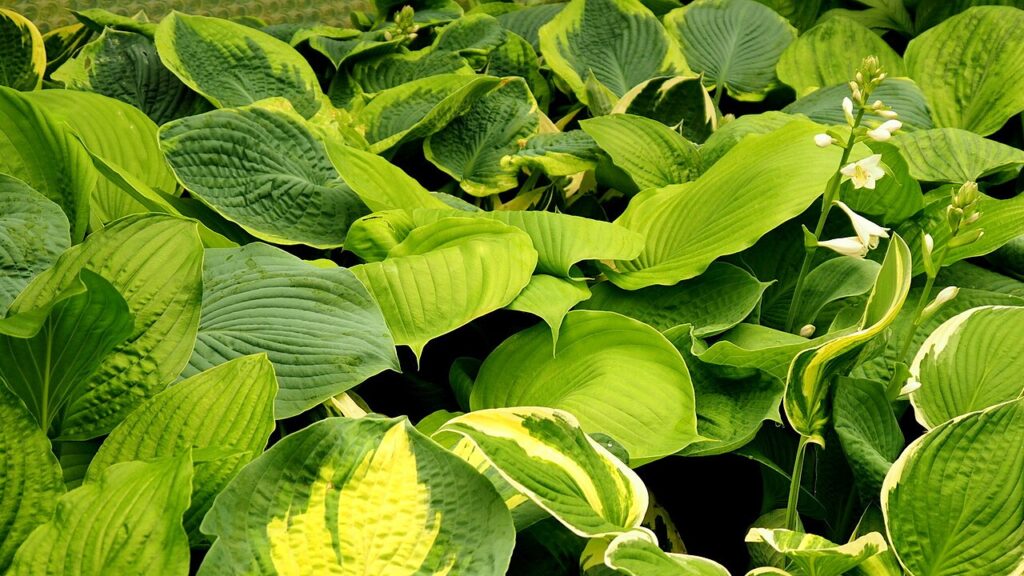
Hostas are a favorite for shaded gardens, offering lush foliage that requires minimal attention. They come in a range of sizes and colors, with many varieties boasting variegated leaves. Hostas prefer moist, well-drained soil and grow best in partial to full shade. With their easy-care nature, they are perfect for adding texture and interest to shady spots in the garden.
These perennials are pest-resistant and can thrive in less-than-ideal conditions, making them great for beginner gardeners. They do not require frequent watering once established and can tolerate periods of dry weather. In late summer, hostas may produce tall flower spikes with fragrant blooms, adding another layer of charm to the garden. Hostas are a great choice for year-round interest, especially in low-light areas.
Lavender (Lavandula angustifolia)
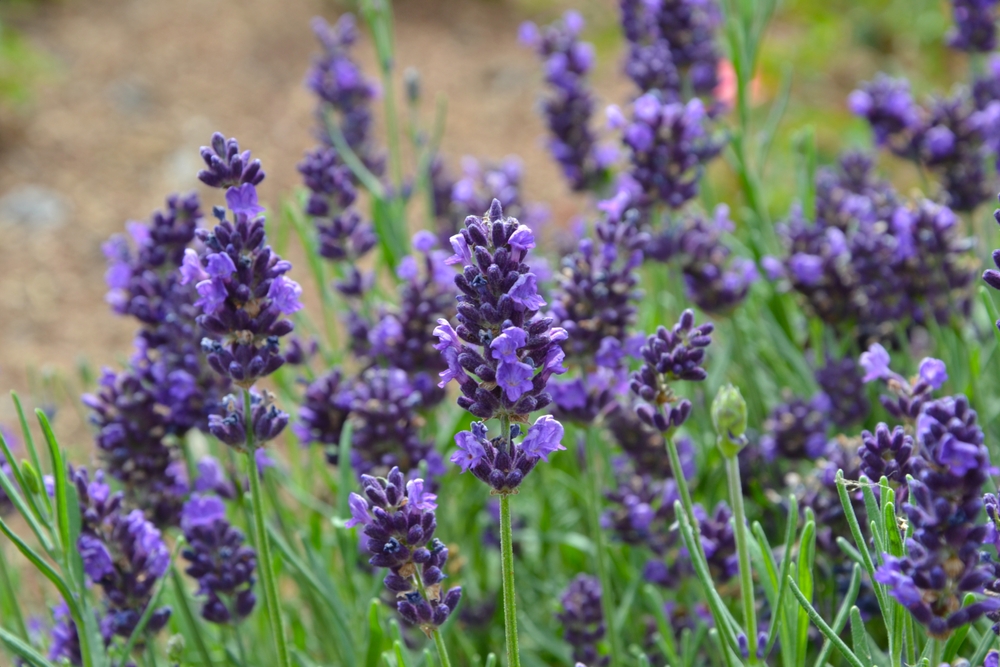
Lavender is a fragrant and hardy perennial that thrives with minimal care. It grows well in full sun and well-drained soil, making it ideal for drought-prone areas. The silver-green foliage and purple flowers attract pollinators, adding beauty and life to your garden. Lavender requires little watering once established, and its fragrant blooms are a favorite in the summer months.
This perennial can withstand both heat and cold, and once it matures, it becomes more resilient with time. Lavender works well as a border plant or in containers, providing a tidy and compact shape. It is also drought-tolerant, making it a great choice for xeriscaping. Beyond its aesthetic appeal, lavender’s essential oils are often used in aromatherapy, adding extra value to this low-maintenance plant.
Sedum (Sedum spp.)

Sedum, also known as “stonecrop,” is a tough and resilient perennial with succulent leaves. These plants can thrive in poor soil conditions and are highly drought-tolerant. Sedums come in various sizes, from low-growing groundcovers to taller, upright varieties. Their attractive flowers bloom in late summer or fall, drawing in butterflies and other pollinators.
Once established, sedums need very little attention, making them perfect for low-maintenance gardens. They can survive with minimal watering and are highly resistant to pests and diseases. Sedums offer vibrant fall color when their flowers turn shades of pink or red. They provide visual interest throughout the growing season and require little more than occasional pruning.
Coneflower (Echinacea spp.)
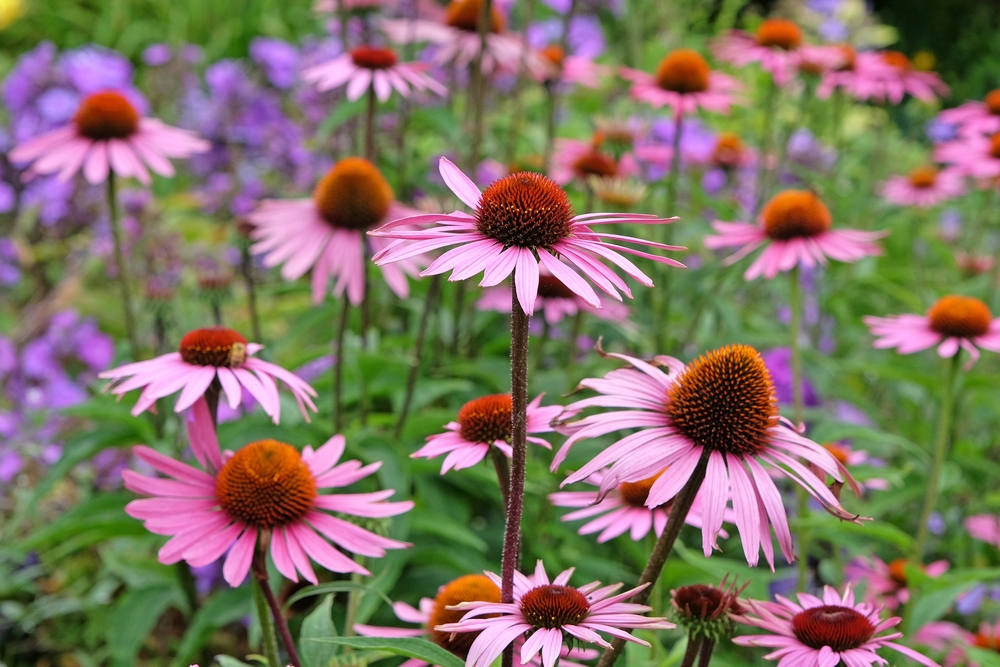
Coneflowers are resilient and long-lasting perennials that thrive in full sun. They are drought-tolerant and prefer well-drained soil, making them perfect for dry, sunny spots. Coneflowers feature large, daisy-like flowers in shades of purple, pink, or white. They bloom throughout the summer and are beloved by pollinators, especially bees and butterflies.
These perennials are low-maintenance and can survive in a variety of soil conditions. Once established, they require little care, making them great for beginner gardeners. Coneflowers also have medicinal uses, particularly in herbal remedies. Their seed heads provide winter interest and offer food for birds during colder months.
Black-Eyed Susan (Rudbeckia hirta)

Black-eyed Susans are a native North American perennial known for their bright yellow flowers and dark centers. They are incredibly resilient and can thrive in poor soil and dry conditions, making them a great addition to any garden. These perennials bloom from mid-summer to fall, providing long-lasting color and attracting pollinators. They require little care, just occasional watering during dry spells.
Once established, black-eyed Susans are a reliable and low-maintenance addition to your garden. Their bold flowers add a splash of color, and they pair well with other perennials and grasses. They are excellent for creating naturalized areas or for use in wildflower gardens. These perennials also self-seed, ensuring new plants year after year.
Peonies (Paeonia spp.)

Peonies are elegant, perennial plants that require minimal care once established. They are well-suited for colder climates and bloom in late spring to early summer with large, fragrant flowers. Peonies come in a variety of colors, including pink, red, and white. They prefer full sun and well-drained soil but can tolerate a range of conditions.
Peonies are long-lived plants that can remain in one spot for decades, making them a great investment for any garden. They require little attention, with occasional deadheading to keep the blooms looking tidy. Peonies’ flowers are often used in floral arrangements due to their large, beautiful blooms. Their strong, upright stems make them a great addition to garden borders.
Coral Bells (Heuchera spp.)
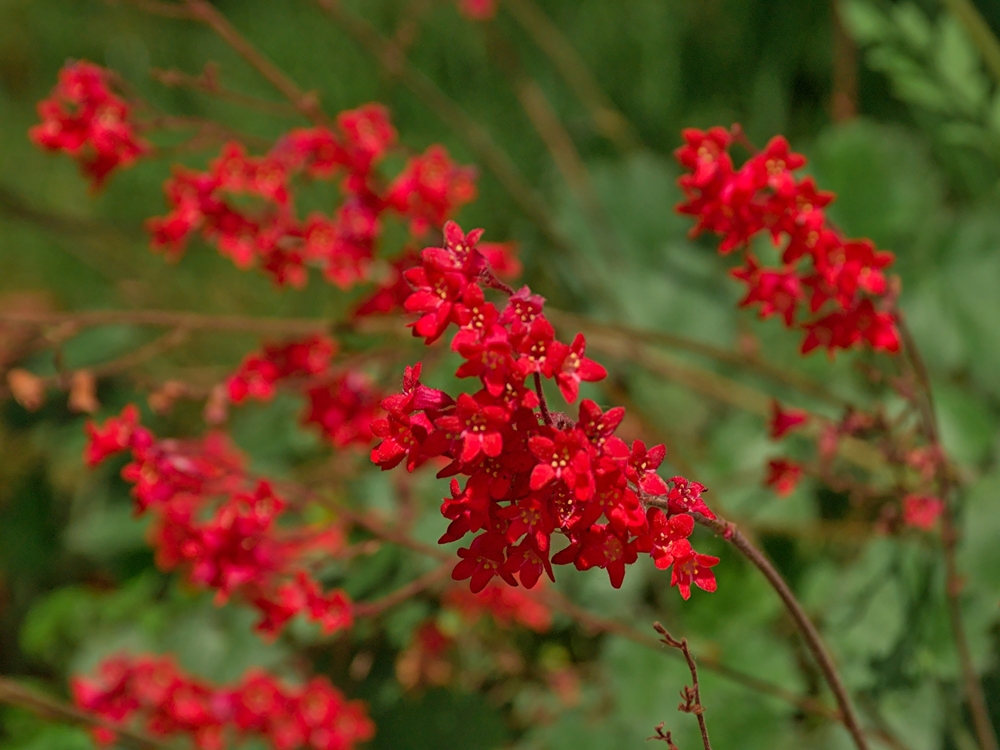
Coral bells are known for their vibrant foliage, which can range from purple and red to green and silver. These plants are perfect for adding year-round color to shady or partially shaded gardens. They are low-maintenance and grow best in moist, well-drained soil. Coral bells also produce delicate flower spikes in late spring, attracting hummingbirds.
Coral bells are resistant to pests and disease, requiring little care once they are established. They can handle a range of soil conditions, including dry spots once their roots are deep. These plants are excellent for ground covers, as they form clumps that fill in quickly. They are also ideal for containers or hanging baskets, offering versatility in the garden.
Astilbe (Astilbe spp.)
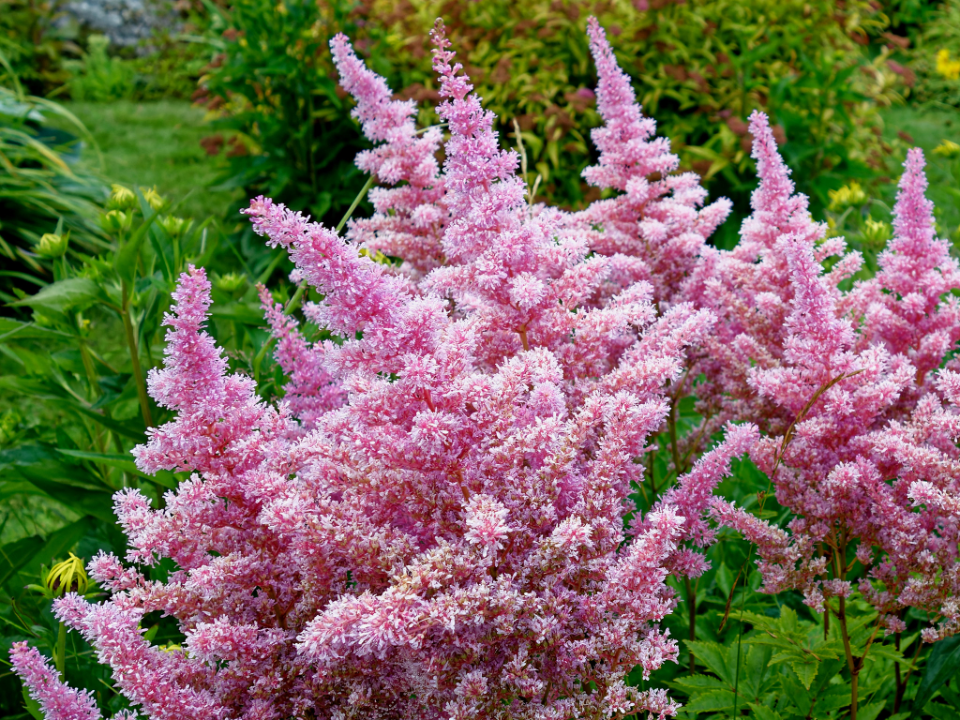
Astilbes are known for their fern-like foliage and beautiful, feathery flower plumes that bloom in late spring to early summer. These perennials thrive in shady, moist areas and can tolerate wetter conditions better than many other plants. They come in a variety of colors, including pink, white, and red. Astilbes are relatively low-maintenance and only require watering during dry spells.
These plants are ideal for adding texture and color to shaded garden areas. Astilbes are also great for naturalizing and work well near ponds or streams. Once established, they need minimal care, with occasional trimming of spent flowers. Their soft blooms and colorful foliage provide visual interest even after the flowers have faded.
Yarrow (Achillea millefolium)
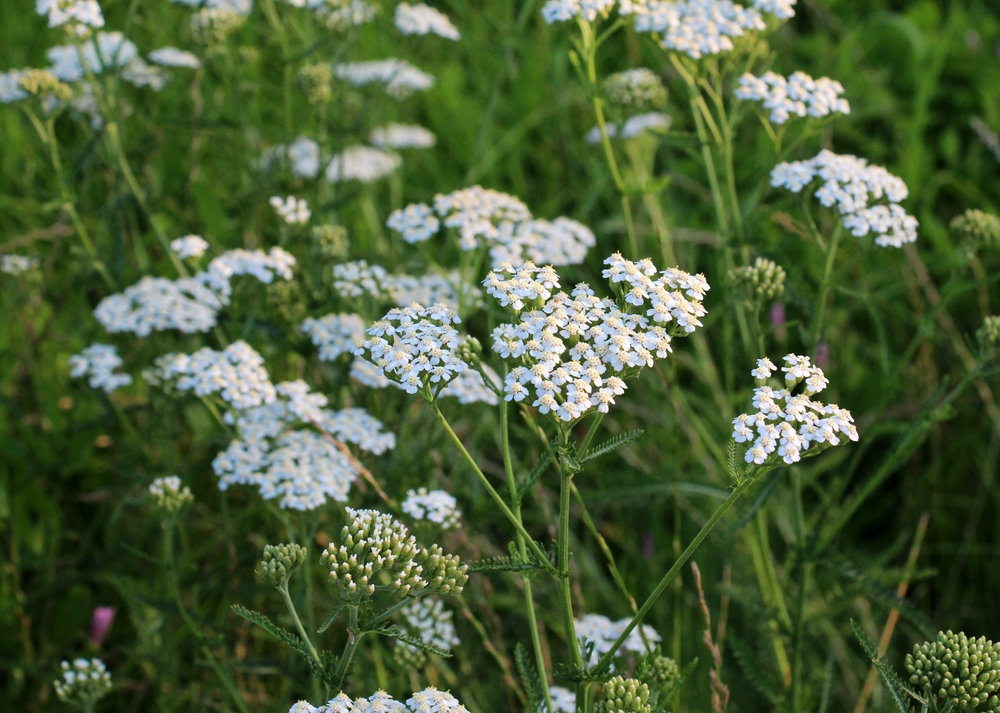
Yarrow is a hardy perennial that thrives in sunny, dry areas. It has feathery foliage and clusters of small flowers that bloom in summer. Yarrow is drought-tolerant and can grow in poor soil, making it a perfect choice for low-maintenance gardens. The flowers come in a variety of colors, including white, pink, yellow, and red.
Once established, yarrow is nearly care-free and requires little water or attention. It attracts pollinators, especially butterflies, and works well in wildflower gardens or naturalized areas. Yarrow’s aromatic foliage also adds a pleasant scent to the garden. It is a great plant for creating informal garden designs or adding texture to mixed borders.
Hellebores (Helleborus spp.)
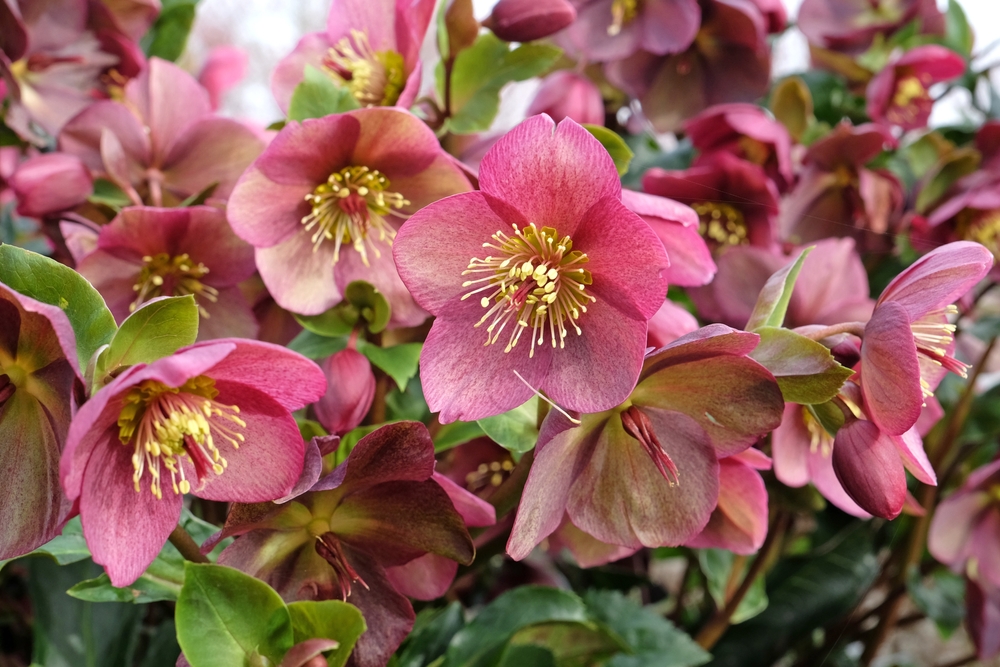
Hellebores are winter-blooming perennials that offer early-season color in shady gardens. Known for their tough, leathery leaves, they thrive in moist, well-drained soil and can handle cold temperatures. The flowers come in various colors, including pink, white, and purple, and bloom from late winter to early spring. Hellebores are excellent for adding color during the dull months of the year.
These plants are easy to grow and require little maintenance, making them perfect for shady or woodland gardens. They can tolerate a range of soil conditions and are resistant to pests and diseases. Hellebores are often overlooked, but their ability to bloom in winter makes them a valuable addition to any garden. Their evergreen foliage also provides year-round interest.
Blanket Flower (Gaillardia spp.)
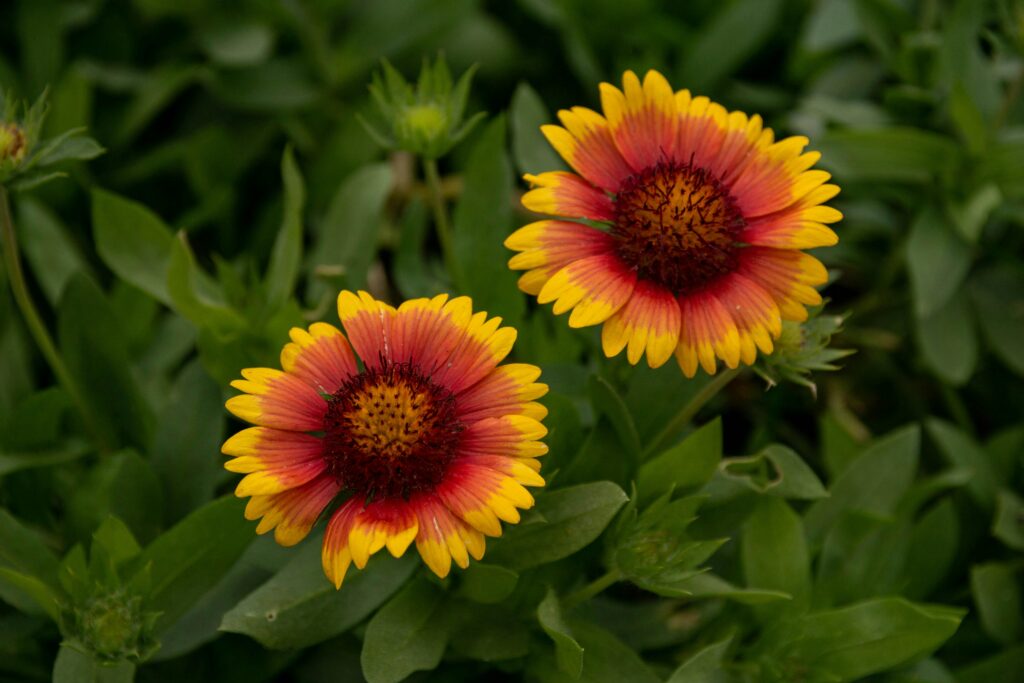
Blanket flowers are hardy perennials that produce bright, daisy-like blooms in shades of red, yellow, and orange. They thrive in full sun and well-drained soil, making them perfect for hot, dry climates. These plants bloom from early summer until frost, providing vibrant color throughout the growing season. Blanket flowers require little care beyond occasional watering during dry spells.
Once established, blanket flowers are drought-tolerant and can withstand poor soil conditions. They are also resistant to pests and diseases, making them a low-maintenance option for gardeners. The cheerful, daisy-like flowers are a favorite among pollinators, adding life to any garden. Blanket flowers are perfect for borders, wildflower gardens, or rock gardens.
Siberian Iris (Iris sibirica)

Siberian irises are known for their elegant, slender blooms that come in a variety of colors, including blue, purple, and white. They thrive in moist, well-drained soil and are ideal for both sunny and partially shaded gardens. These plants bloom in late spring to early summer, offering a splash of color during the warmer months. Siberian irises are low-maintenance and can tolerate a range of growing conditions.
These irises are perfect for water gardens, as they prefer consistently moist conditions. They are also resistant to pests and diseases, requiring minimal care once established. Siberian irises make excellent additions to borders or mixed flower beds. Their graceful flowers and tall stems add a vertical element to the garden.
Catmint (Nepeta faassenii)

Catmint is a low-maintenance perennial that thrives in full sun and well-drained soil. Its aromatic foliage and purple-blue flowers attract pollinators, including bees and butterflies. Catmint blooms from late spring to early summer and requires little care beyond occasional trimming. It is drought-tolerant and can survive in poor soil, making it a perfect choice for low-maintenance gardens.
This perennial is excellent for use in borders, containers, or as a ground cover. It is a favorite among gardeners due to its resilience and easy care. Once established, catmint needs little water and can tolerate heat. Its soft, fragrant leaves and long-lasting blooms provide year-round interest.
Sweet William (Dianthus barbatus)
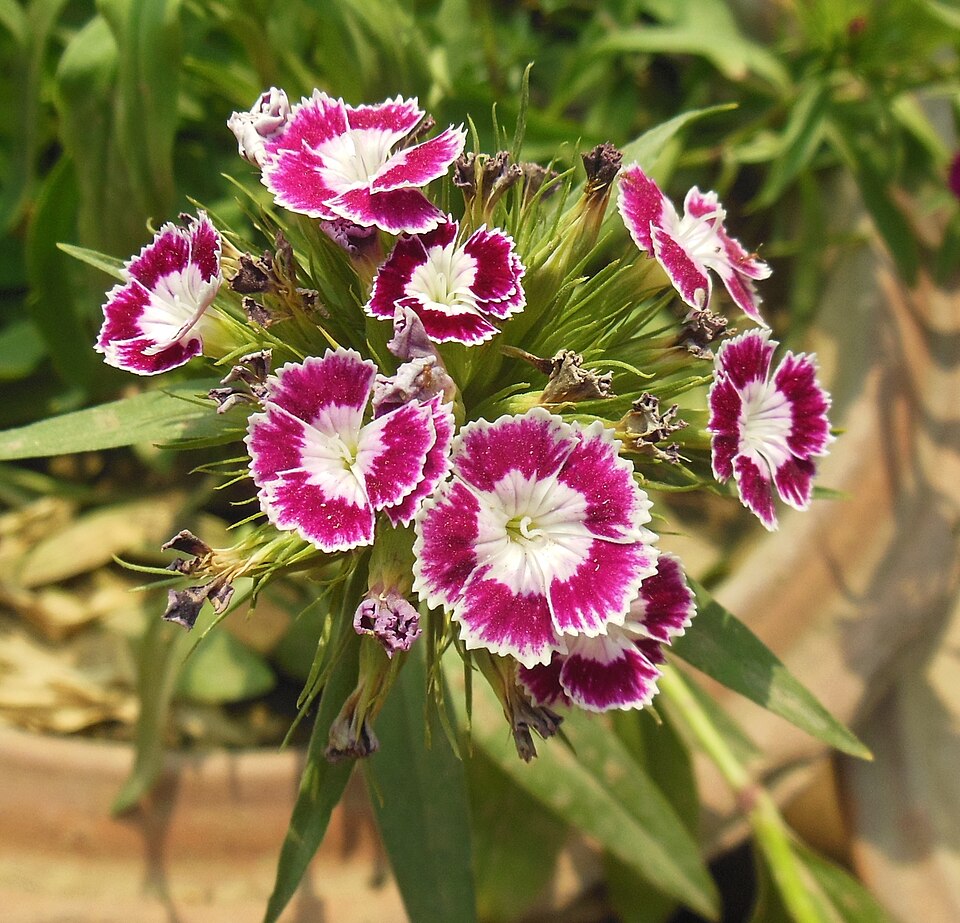
Sweet William is a hardy, biennial perennial that produces clusters of fragrant flowers in shades of pink, red, and white. These plants thrive in full sun and well-drained soil. They are perfect for attracting pollinators and provide vibrant color in early summer. Sweet William requires minimal care, needing only occasional watering and deadheading to encourage additional blooms.
Once established, Sweet William can tolerate dry conditions and is resistant to many pests. It works well in cottage gardens, borders, or mixed flower beds. These perennials provide a splash of color and fragrance, making them a great choice for low-maintenance gardeners. Their ability to self-seed ensures new plants year after year.
This article originally appeared on Avocadu.
